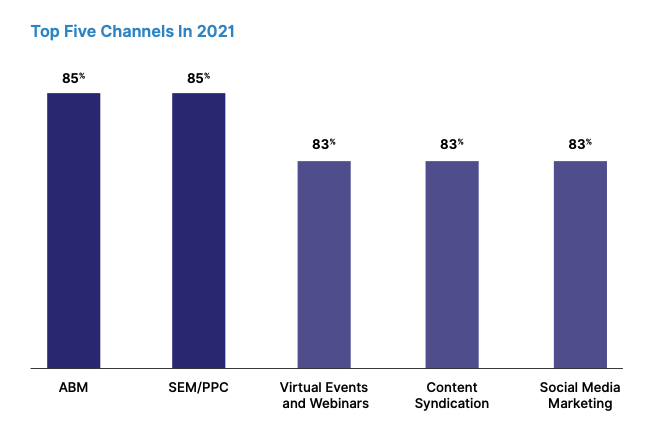Online B2B Buyer Behavior is Changing
Make the Transition to Buyer-Centric Precision Demand
There’s little doubt that 2020 changed B2B buyer behavior forever. The global pandemic and subsequent lockdowns pushed buyers further online to perform their own research and chart their own digital paths to purchase.
The results speak for themselves. According to Gartner, buyers now complete 83% to 95% of their purchase decisions before they ever connect with a salesperson.
Is marketing succeeding in meeting the demands of this evolving world? We conducted a recent study of B2B marketing leaders, and it depends on who you ask.
- 57% of VP level and higher marketers are confident their plans in 2021 will achieve revenue targets. Only 26% of director/manager level marketers share their confidence.
- Across the demand funnel, SAL, Opp, and revenue marketers who lead teams responsible for the work are as confident as VPs that they’ll hit MQL targets. They are 2x to 3x more confident that they’ll miss SAL, Opp, and revenue targets.
Why MQLs aren’t converting to opportunities.
Before they moved online, buyers were willing to spend more of the purchase cycle with sales. That meant hitting revenue goals simply required higher MQL and sales outreach volumes. Marketing brought in the leads and sales did the heavy lifting by engaging buying committees and building relationships. Things have changed. And marketers can’t ignore the impact that change is having. If they do, they’ll drive MQLs but miss everything else. The research bears that out.
- 44% of MQLS are not in market for a solution.
- 38% of MQLs are not ready to talk to sales.
The digital transformation is here.
Throughout 2020, a growing number of marketers had to increase their adoption of digital-first strategies. It’s no surprise that in 2021 most are committing the largest portions of their budgets to digital channels.

Digital will continue.
Marketers have become efficient and effective at generating leads through digital. And that’s a good start. But it’s no longer enough to simply activate digital channels and start driving leads to the sales funnel. That process doesn’t consider buyers and the B2B decision making process. It’s disconnected, disjointed, and impersonal.
It’s time to create seamless, multi-channel experiences that deliver targeted, relevant messaging to buyers, wherever they are. That means creating touchpoints across all channels, wherever engaged buyers, known and unknown, may be. And it means making each touchpoint connected and meaningful.
Break down the silos.
Buyers want to engage on their own terms. This new era in marketing demands a connected omnichannel experience. Every digital touchpoint must consider the touchpoint before it.
Silos are obstacles to collaboration and prevent marketers from connecting with buyers across channels. They’re the roadblocks to creating the exceptional experiences today’s buyers are seeking. The first big step in success is the elimination of the silos that house data, teams, process, and technologies, so marketers can target the right people with the right messages, right when they want them, in their channel of choice.
It’s time to get personal.
Now that the buying cycle is self-serve and digital, marketers need to change, and change quickly.
Today’s buyers are looking for a relationship with brands. They want to be treated like human beings, not leads. And they expect to engage on their own terms, at the times and places they choose. The first step is to move beyond traditional marketing-centered or sales-focused processes.
Only one process matters: the buyer’s process.
Dive deeper into the research and evaluate the Martech stack behind your strategy with our insightful eBook.

Integrate centralizes and connects the omnichannel B2B buying process in one unified platform that ensures 100% marketable data so marketers can reach today’s digitally liberated buyers. As the leader in Precision Demand Marketing, Integrate enables marketers to create meaningful connections with buyers, leveraging an account-based, buyer-driven approach that speeds lead conversions and drives predictable revenue at scale.









